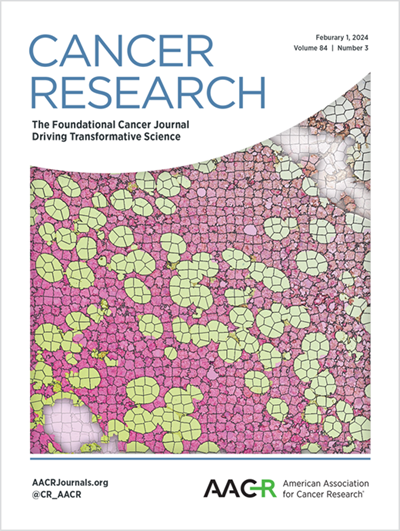Engineered SH3-Derived Sherpabodies Function as a Modular Platform for Targeted T Cell Immunotherapy
IF 12.5
1区 医学
Q1 ONCOLOGY
引用次数: 0
Abstract
Engineered T cell therapies have emerged as a promising approach for cancer treatment, yet their application to solid tumors remains challenging due to the limited specificity and persistence of current antigen recognition strategies. Here, we introduced sherpabodies, engineered from a human SH3 domain scaffold, as a class of antibody-mimetic proteins capable of precise tumor-associated antigen recognition. A phage display library identified sherpabodies against a panel of popular tumor-associated antigens (TAA), which were subsequently incorporated into second-generation chimeric antigen receptor constructs that were termed sherpabody-guided CARs (SbCARs). These SbCARs demonstrated potent in vitro specificity and cytotoxicity against solid cancer TAAs, without cross-reactivity to closely related proteins. The modularity, versatility, and small size of sherpabodies enabled generation of multipecific SbCARs, in particular TriSbCARs with OR-logic that could robustly activate with cells expressing any or combinations of three cognate TAA targets, as well as circuits with IF-THEN logic in combination with synthetic Notch. In vivo, SbCAR T cells elicited a dose-dependent antitumor response in xenograft mouse models, highlighting their potential for therapeutic application. Furthermore, an inducible SbCAR system displayed enhanced persistence and antitumor activity when compared to constitutive CARs. These findings suggest that sherpabodies represent a versatile and promising platform for the next generation of CAR-T cell therapies, particularly for solid tumors.求助全文
约1分钟内获得全文
求助全文
来源期刊

Cancer research
医学-肿瘤学
CiteScore
16.10
自引率
0.90%
发文量
7677
审稿时长
2.5 months
期刊介绍:
Cancer Research, published by the American Association for Cancer Research (AACR), is a journal that focuses on impactful original studies, reviews, and opinion pieces relevant to the broad cancer research community. Manuscripts that present conceptual or technological advances leading to insights into cancer biology are particularly sought after. The journal also places emphasis on convergence science, which involves bridging multiple distinct areas of cancer research.
With primary subsections including Cancer Biology, Cancer Immunology, Cancer Metabolism and Molecular Mechanisms, Translational Cancer Biology, Cancer Landscapes, and Convergence Science, Cancer Research has a comprehensive scope. It is published twice a month and has one volume per year, with a print ISSN of 0008-5472 and an online ISSN of 1538-7445.
Cancer Research is abstracted and/or indexed in various databases and platforms, including BIOSIS Previews (R) Database, MEDLINE, Current Contents/Life Sciences, Current Contents/Clinical Medicine, Science Citation Index, Scopus, and Web of Science.
 求助内容:
求助内容: 应助结果提醒方式:
应助结果提醒方式:


